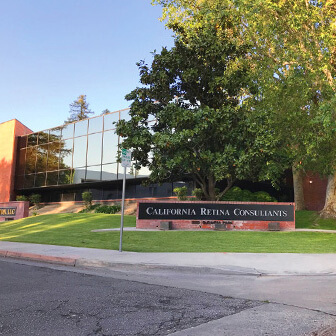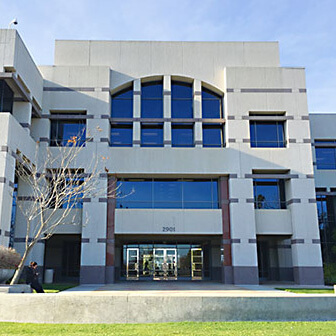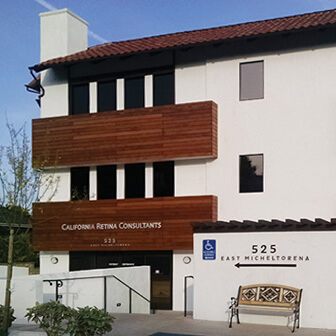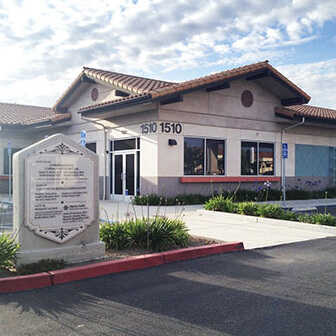CRC Clinical Research
Our mission in Clinical Research at California Retina Consultants is to provide patients with the opportunity to participate locally in national clinical trials of new treatments for severe retinal diseases. The doctors of California Retina Consultants have been recognized for their involvement in numerous national and international clinical trials of novel treatments for complications of diabetic retinopathy, macular degeneration, retinal detachments, and ocular injuries.
Participation in a clinical trial is completely voluntary. Eligibility for enrollment into a particular trial is determined through a screening process that varies from study to study. Because of the specific nature of your disease, you may not be eligible for participation. If you decide not to participate or are deemed ineligible, the doctors will continue to care for your eyes and provide you with the highest standard of care available.
What is clinical research?
Research refers to clinical trials that test medical, surgical, or behavioral intervention in people.
The clinical trials that are conducted at California Retina Consultants (CRC) are carefully designed studies that systematically gather data on new therapies to treat retinal diseases.
As a research department, we partner with pharmaceutical companies, large and small, to develop new drugs and therapies that maylast longer, be more effective, or provide long-term solutions to diseases that have a higher treatment burden.
Why is research important?
Research stands as a cornerstone in healthcare and society, offering a beacon of hope for individuals by providing novel treatments where none exist, or improving upon current therapies. For society and future generations, it serves as a key to unlocking the mysteries of disease and health. Through research, we gain critical insights into the underlying causes and mechanisms of various conditions, paving the way for the identification of safe and effective treatments.
Today's medical advancements are the fruit of the unwavering dedication and collaboration of thousands of researchers, clinicians, and patients. While newer technologies and artificial intelligence are instrumental in facilitating clinical research, it is the combined human effort that remains the fundamental driving force behind these scientific achievements. The harmonious blend of human endeavor with technological innovation is what will propel us toward groundbreaking discoveries and enhanced health outcomes for all.
Research with Retina Consultants of America
As a company Retina Consultants of America (RCA) is comprised of over 200 sites across 20 states serving almost 2 million patients annually.
Prior to joining RCA, our practice had a research department that was conducting clinical trials and was having a significant impact in our patients’ lives.
The benefit of joining RCA is that we have access to a greater set of resources that enables us to reach an even greater number of patients! Everything, from facilities and equipment to training and personnel, is available to RCA research sites to improve the quality of care we can provide. We can even design and conduct our own large-scale research studies using the sites in our network!
Clinical Trial FAQ
If you agree, you will be carefully screened for your eligibility to participate. This usually involves a careful eye examination and supplemental diagnostic tests. In most cases, these are the same tests that would be required for your care, regardless of your participation in a research study. However, testing for studies must be done in a standardized way, and this may take additional time.
The length of time you will be asked to participate in the research study will depend on the specific study for which you qualify. Some studies require as little as a few months of participation, while others ask that you participate for over a year.
At our practice, we carefully select the studies we run for safety and responsibility. The object of research is to learn and to develop better treatments, and the outcomes of the study are not known at the start. We only participate in research when we feel that the scientific basis is solid. Our goal is to only participate in studies where study participants have the potential to receive more advanced care that is available outside the study.
Most studies offer compensation for each completed visit. However, in the rare case that they do not, these details will be reviewed with you before you agree to participate.
You can talk to the doctors or the research staff about any questions, comments, or concerns you have about participating in a research study.
Current Clinical Trials
Neovascular Age-related macular degeneration (wet AMD) is a prevalent, progressive retinal degenerative macular disease. It impacts the central area of the retina in the eye, called the macula. This causes vision to be blurry and distorted.
Dry macular degeneration causes drusen to accumulate in the retina and can damage the sensitive nerve cells.
Geographic Atrophy is a medical term that refers to later-stages of Dry AMD. It happens when patches of damaged cells, called lesions, permanently damage the retina. Causing impaired central vision.
Diabetic Macular Edema happens when high blood sugar levels affect the blood vessels in your eye. Your blood vessels leak, which causes fluid buildup and thicken your retina.
Patient Testimonials
Meet Our Team
Dante Pieramici, MD
Research Medical Director

Clinical Investigators
- Dante Pieramici, MD
- Dilsher Dhoot, MD
- Daniel Learned, MD
- Robert Avery, MD
- Ma’an Nasir, MD
- Alessandro Castellarin, MD
- Robert See, MD
- Stephen Couvillion, MD
- Nathan Steinle, MD
- Chris Wu, MD
- Dong Yang, MD











